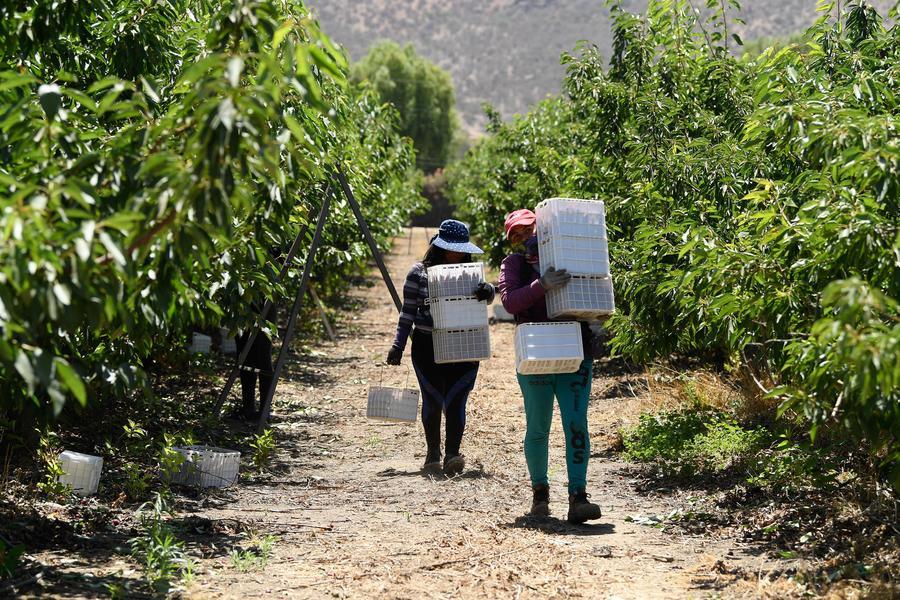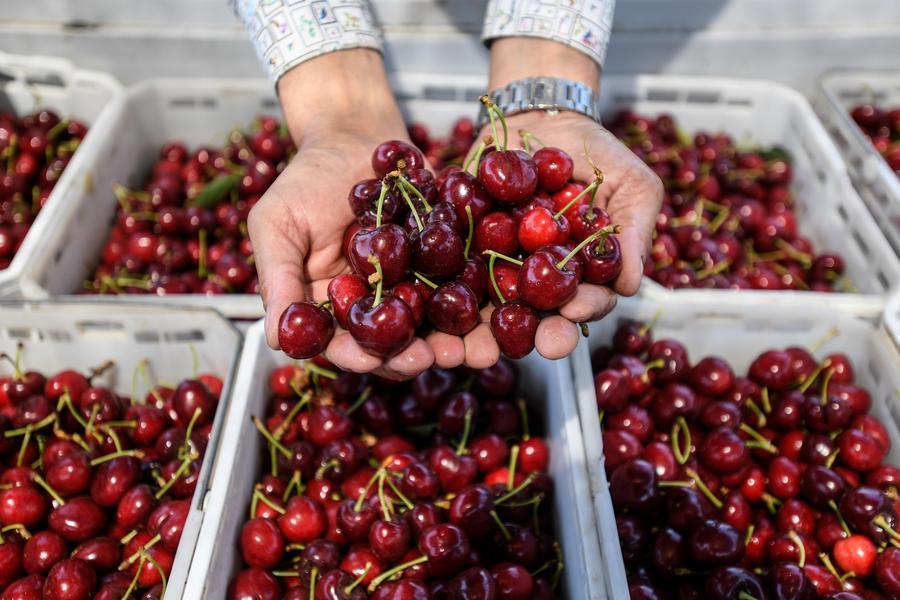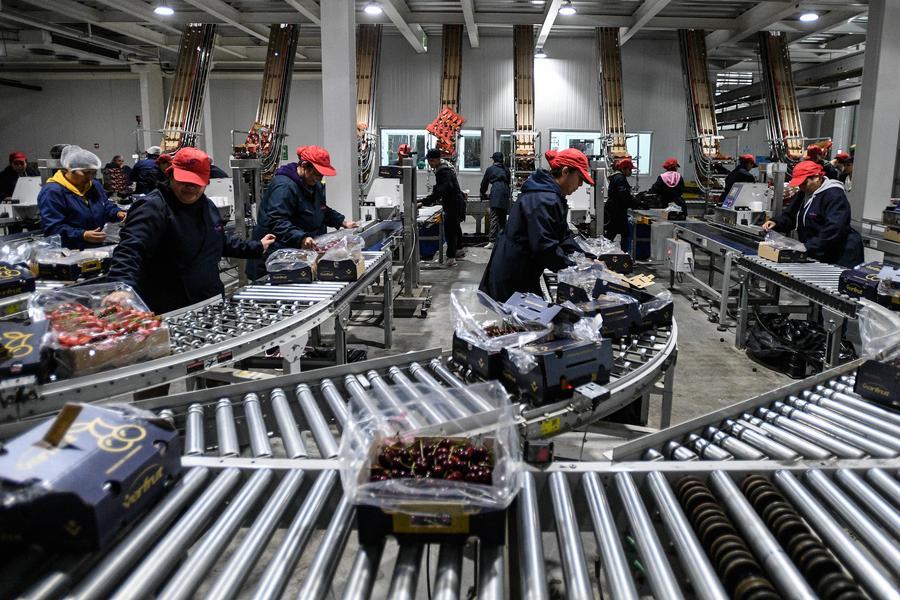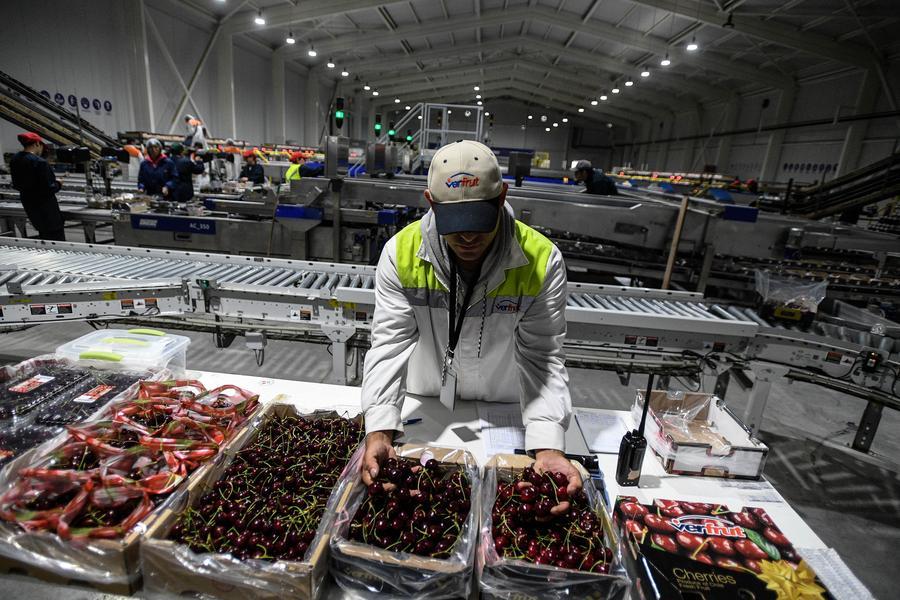Xinhua | January 24, 2024
This photo taken on Jan. 20, 2024 shows Chilean cherries at a store in north China's Tianjin. (Xinhua/Zhao Zishuo)
North China's Tianjin Port has launched a new direct shipping route to facilitate cherry imports from Chile -- the first direct shipping service for Latin American cherries bound for the Beijing-Tianjin-Hebei region.
An aerial drone photo taken on Jan. 16, 2024 shows a container vessel loaded with imported cherries sailing toward a container terminal of Tianjin Port in north China's Tianjin. (Xinhua/Zhao Zishuo)
An aerial drone photo taken on Jan. 16, 2024 shows a container vessel loaded with imported cherries at a container terminal of Tianjin Port in north China's Tianjin. (Xinhua/Zhao Zishuo)
An aerial drone photo taken on Jan. 16, 2024 shows a container vessel loaded with imported cherries at a container terminal of Tianjin Port in north China's Tianjin. (Xinhua/Zhao Zishuo)
Staff members tie up a container vessel loaded with imported cherries at a container terminal of Tianjin Port in north China's Tianjin, Jan. 16, 2024. (Xinhua/Zhao Zishuo)
Chilean cherries are increasingly favored by Chinese consumers over the years. Over the past seven years, Chilean cherry exports to China have grown at an approximate annual average rate of 29 percent. The Chilean Fruit Exporters Association estimates that more than 85 percent of Chilean cherries will be exported to China this season.
The growing demand of the Chinese market has spurred the expansion of Chile's cherry planting area and benefited local farmers. From 2000 to 2022, the total cherry planting area in Chile grew from 3,241 hectares to 61,559 hectares, according to data from Chile's Office of Agricultural Studies and Policies.
Workers transport newly harvested cherries at a plantation near Santiago, Chile, Dec. 5, 2019. (Photo by Jorge Villegas/Xinhua)

Workers transport newly harvested cherries at a plantation near Santiago, Chile, Dec. 5, 2019. (Photo by Jorge Villegas/Xinhua)

This photo taken on Dec. 5, 2019 shows cherries at a plantation near Santiago, Chile. (Photo by Jorge Villegas/Xinhua)
China is Chile's biggest trading partner, its top export destination, and its leading source of imports.
Chile was the first Latin American country to sign a free trade agreement with China. In 2017, the free trade agreement was upgraded, increasing the proportion of zero-tariff products to 98 percent.
The cherry is a star product in the trade between the two countries. The cherry harvest coincides with China's traditional Spring Festival, creating near-perfect trade conditions.

Workers package cherries at a factory in Las Cabras, O'Higgins Region, Chile, Jan. 4, 2024. (Photo by Jorge Villegas/Xinhua)

A worker checks the quality of cherries at a factory in Las Cabras, O'Higgins Region, Chile, Jan. 4, 2024. (Photo by Jorge Villegas/Xinhua)

Workers package cherries at a factory in Las Cabras, O'Higgins Region, Chile, Jan. 4, 2024. (Photo by Jorge Villegas/Xinhua)
Previously, cherries sold in northern China were mainly transported via highways after the goods entered China through ports in the south or via air services, making the overall logistics cost relatively high.
Thanks to the new route, the cherries are expected to reach the fruit and vegetable wholesale markets in Beijing, Tianjin and Hebei first. According to Pagoda, a fruit retailing company, its outlets in the region are estimated to see the overall price of the cherries drop by 50 to 70 percent thanks to the new logistics option.
Customs staff members check imported cherries at the Dongjiang Free Trade Port Zone in north China's Tianjin, Jan. 17, 2024. (Xinhua/Zhao Zishuo)
A customer selects Chilean cherries at a store in north China's Tianjin, Jan. 20, 2024. (Xinhua/Zhao Zishuo)
This photo taken on Jan. 20, 2024 shows Chilean cherries at a store in north China's Tianjin. (Xinhua/Zhao Zishuo)

